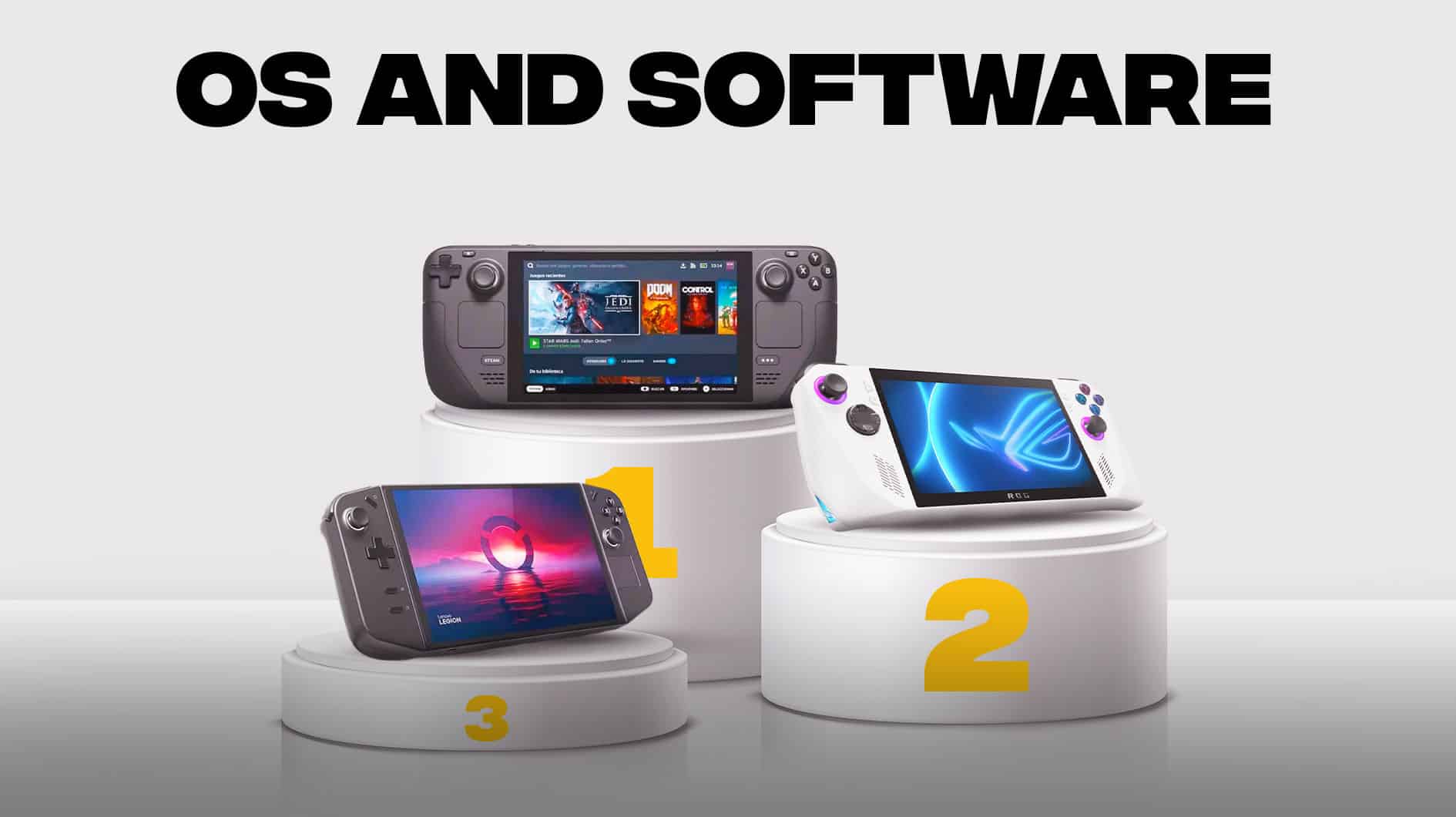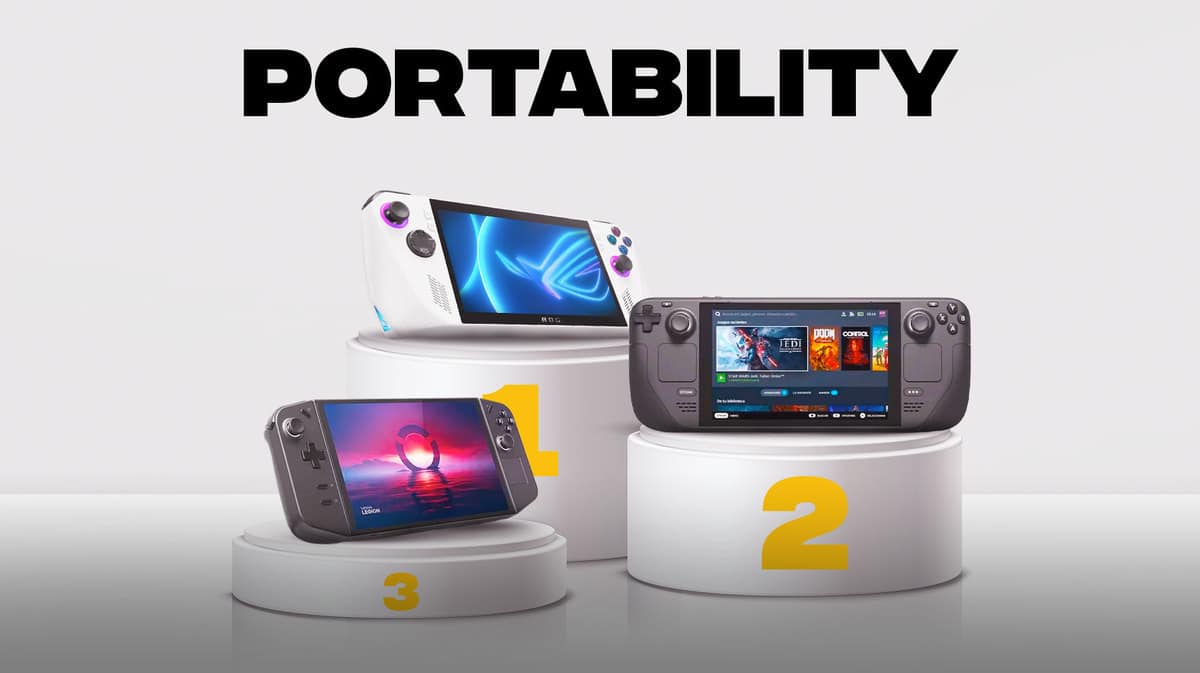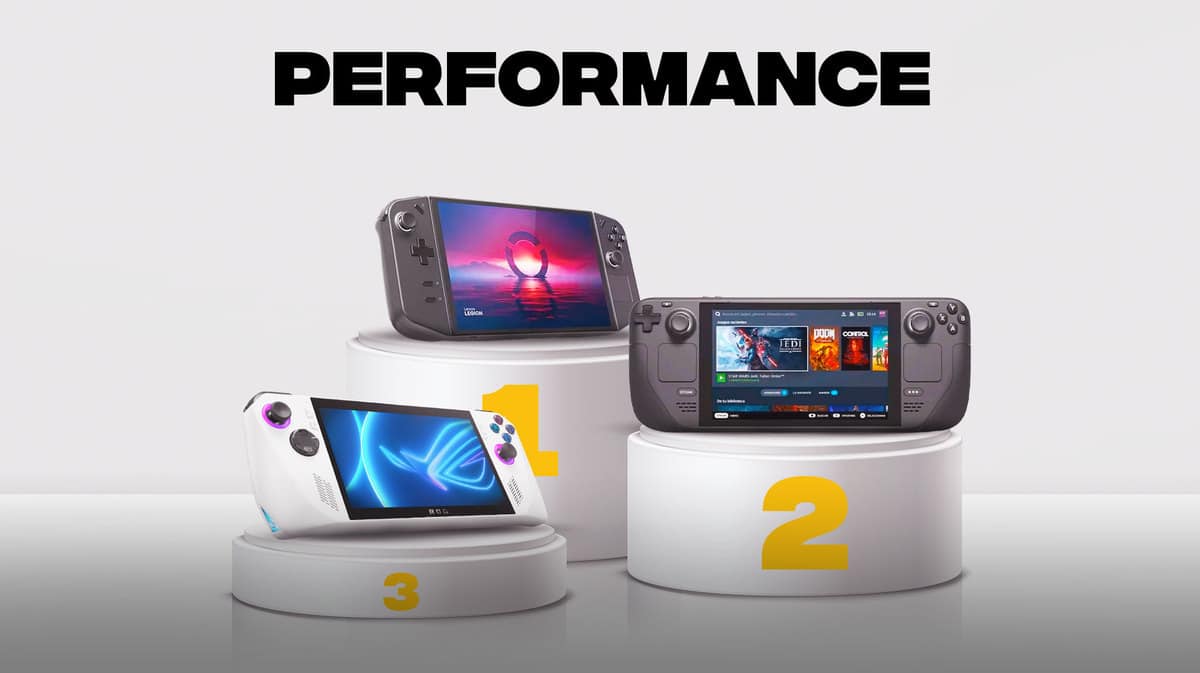Originally thought to be the Nintendo Switch killer, multiple new devices are now also being put forward as the “Steam Deck killers.” At the forefront of this conversation are Asus' ROG Ally and the Lenovo Legion Go, handheld PC gaming devices that arrived shortly after the release of the original Steam Deck.
But just as the Nintendo Switch continues to thrive in spite of these new handheld PC gaming consoles, the Steam Deck remains popular and even led to the announcement of the Steam Deck OLED. This goes to show that Valve isn't resting on its laurels when it comes to the handheld PC gaming front. But is the new Steam Deck OLED even a worthy competitor to the ones developed by Valve's rivals? Let's have a closer look and see how the Steam Deck OLED comparison vs. the ROG Ally and the Legion Go pans out.
The Steam Deck OLED still has the advantage of Software

Arguably the best-selling point of the Steam Deck is its software, and that remains unchanged with the arrival of the OLED version. Of course, there are caveats here wherein the Legion Go and the ROG Ally offer a closer experience to an actual desktop thanks to their Windows OS, but the Steam Deck's SteamOS and custom Linux desktop OS have an edge in terms of flexibility. The Steam Deck also allows you seamless access to your Steam library.
One underappreciated but still important aspect of this is the Steam Deck's compatibility grading system, as developers strive to meet the Verified mark for the Steam Deck. Unbeknownst to many, Verified games actually automatically configure themselves to the Steam Deck control layout. For those that don't have the same mark, community loadouts also exist that allow players to configure their own controls for non-verified games. It's been rare, but there have been instances where players still had to map their game controls to their Legion Go or ROG Ally just because the games don't automatically configure themselves.
Finally, it's also underappreciated how the Steam Deck OS smoothly integrates your Steam library into your gaming system. It's very convenient how you can just pick up your Steam Deck and open your library seamlessly, choosing a game and heading straight into play. The other two don't have the same convenience here, so we're giving this entire section to the Steam Deck.
The ROG Ally is the most portable of the three

In terms of ergonomics, all three devices have their fair share of advantages, but we find the ROG Ally to be the most handheld-friendly and convenient to carry while traveling. It is, in fact, the lightest of the three. You'll immediately feel the difference just by lifting up the three devices one after the other. Meanwhile, the ROG Ally also has the best grip, especially when played against a surface and held at an angle facing towards your face.
Playing with the ROG Ally while walking or while carrying it around isn't as ideal as the Legion Go, so it loses out a bit in the battle where the two devices are being played on the go, like while commuting or while walking home. However, we still think that portability is king here, especially since you don't really get to enjoy playing until you're comfortably sat down on a table or in bed. With that said ROG Ally takes the win here.
The Legion Go has the best display

The Legion Go has the best display across the three devices, period. Its 8.8-inch 2560 x 1600-pixel IPS display with 144Hz refresh rate totally outshines ROG Ally's 7-inch 1080p IPS and the Steam Deck OLED's 7-inch 1280p OLED. Even with the display upgrade, a Steam Deck OLED comparison will still give the crown to the Legion Go. Do you want sharper graphics and better image fidelity? Even with just an IPS display, the Legion Go still offers a better deal than the Steam Deck OLED.
The Legion Go has the best performance

The Steam Deck OLED also received performance upgrades on top of its display improvements, carrying with it a more efficient AMD APU, but the upgrade comes as an efficiency improvement more than anything. With the better battery capacity and the more efficient processor, the Steam Deck OLED added a lot of beef to its battery life.
However, in terms of raw processing power, the Legion Go's AMD Ryzen Z1 (which is also the same processor used by the ROG Ally) still is the better processing chip versus the bespoke Steam Deck's Zen 2. The Legion Go takes the cake here over the ROG Ally simply because it has a stronger battery life, but in virtually everything else, the Legion Go and the ROG Ally are almost the same in terms of hardware capabilities.
The Legion Go has the most features

When Lenovo saw its competition creating its own handheld PC gaming devices, Lenovo realized that to win the war, they have to get creative. So, Lenovo designed the Legion Go and stuffed as many features as they could into it, making it the most unique of the three devices. When you do a Steam Deck OLED comparison with the ROG Ally, you pretty much are just looking at who has the better numbers and better feel. When the Legion Go entered the market, comparisons like this just got a bit more complicated.
First off, the Legion Go's detachable controllers ala Nintendo Switch are a great improvement from the original Steam Deck design. It's an elegant improvement that completely adds a lot of value to the Legion Go, making it more couch co-op multiplayer-friendly, and more versatile. Its right controller can also morph into a vertical controller and serve as a makeshift mouse or even as an FPS controller. These features make the Legion Go a lot of unique selling propositions.
Meanwhile, the Legion Go also has a sturdy kick-stand that lets you prop the device on a flat surface – something that neither the ROG Ally nor the Steam Deck OLED can do. The most obvious use for this is when you detach the controllers and play with your hands off the device – but this is also a great way to turn your Legion Go into a small theater where you can watch your favorite shows on the go. It even goes well with its larger and higher resolution display.
Overall Winner and Price Comparison
Overall, the Legion Go really blows the Steam Deck OLED and the ROG Ally out of the water in terms of features. However, the Steam Deck OLED still is a solid choice in terms of reliability, compatibility, and comfort in its Steam library integration. Of the three devices, it feels like it's the ROG Ally that quickly aged and is now left behind in the competition, with Valve's timely introduction of a new Steam Deck variant giving it a leg up in the race. But overall, the Legion Go is the overall winner of this comparison, with both the Steam Deck OLED and the ROG Ally eating dust behind it.
Of course, these advantages all come at a cost, and there's more to just plain value and features when it comes to gaming economics.
Looking to purchase one of these devices either as a gift or for yourself during these holiday season? The Steam Deck OLED starts at $549 and goes on sale in November 16, while the already released ROG Ally goes for $599, with the most expensive option being the Legion Go at a hundred dollars higher at $699.



















